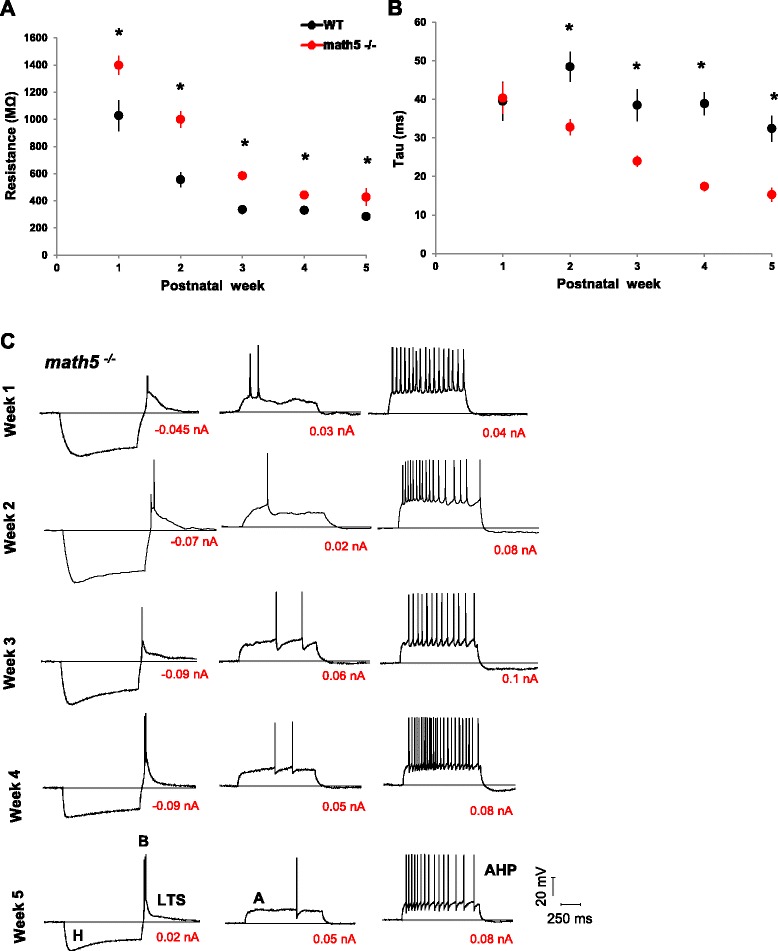Fig. 9.

Passive and active membrane properties of relay cells in WT and math5 −/−. a Scatter plot showing mean input resistance ± SEM in WT (black) and math5 −/− (red) at different postnatal weeks. Estimates based on steady state voltage responses evoked by −0.01 nA current pulse. Overall, math5 −/− have higher input resistance than WT (*, week 1, 4–5 p <0.05, week 2–3 p <0.0001). b The decay constant tau as determined by a single exponential fit to a −0.01 nA current injection for the first 200 ms of recording. Math5 −/− (red) have a shorter τ than WT (black, *, p <0.0001). c Examples of the voltage responses to current injection for math5 −/− relay cells at different postnatal weeks. Math5 −/− relay cells possess the full complement of membrane properties as in WT. These include a depolarizing sag mediated by a mixed cation conductance (H), a rebound low threshold Ca2+ spike (LTS) and burst firing (B), an outward rectifying response that delays spike firing (A), and spike frequency accommodation (AHP)
